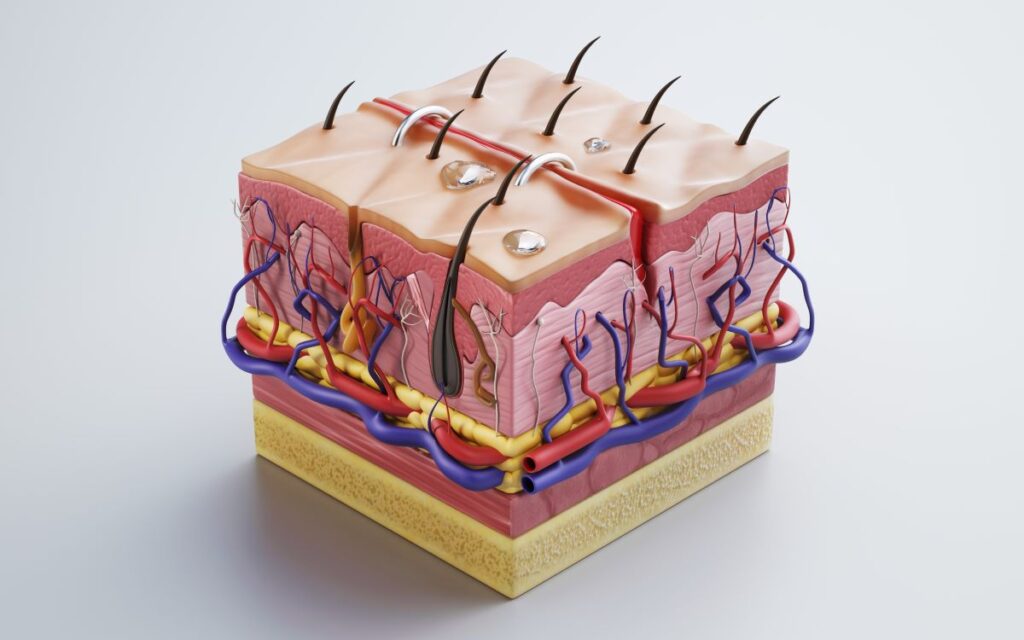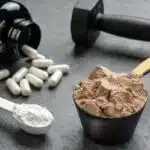Adipose Tissue: Brown, White and Beige
By Gabrielle Finora and the Team at LCWNS
Beyond its commonly known role as “fat,” adipose tissue is a dynamic part of our bodies with many functions that profoundly affect our health and metabolism. You may know about white adipose tissue, but brown and beige adipose tissues exist, too. The color difference in the three types is based on the number of mitochondria found in the cells. From the energy storage ability of white adipose tissue to the thermogenic power of brown adipose tissue and the fascinating intermediary state known as beige adipose tissue, we will explore their distinct functions and unveil the roles they play within our bodies.
White adipose tissue (WAT)
White adipose tissue insulates the body and cushions internal organs. It is found right under the skin (subcutaneous) and wrapped around organs, deep inside the belly (visceral). This tissue is a rich energy storage source composed of large, individual molecules called adipocytes. The quantity of these cells fluctuates. It can grow or shrink at any time during childhood and adulthood.
While this type of fat’s primary role in the body is energy storage, it has a more complex role in regulating metabolism. WAT is needed for glucose homeostasis. Researchers are currently investigating its importance in endocrinology. Leptin, along with angiotensinogen, adipsin, acylation-stimulating protein, and interleukin 6, are just a few proteins produced from adipose cells. The relationship between estrogen and the regulation of WAT in females is well documented and is a focus of researchers now.
Brown adipose tissue (BAT)
Brown adipose tissue is a bit different than WAT. Its main purpose is to keep our bodies warm. There is far less BAT compared to WAT in the body because it is formed before we are born. The amount of BAT is set and does not change after birth. It is mainly found on the back of the neck, clavicles, and around the heart, liver, spleen, kidneys, and pancreas in adults. While this may sound like multiple places, the average lean adult male and female BAT composition averaged about 34 grams. That is less than the weight of a standard gold ball!
BAT has a unique quality. Interestingly, it can produce heat when exposed to cold temperatures. This tissue type is activated right before you start to shiver. One study suggests that heat generation by BAT is responsible for about 4.5% of energy expenditure in the body. This leads researchers to believe that inducing this type of fat through cold exposure can be a potential treatment for weight loss. More research is needed to confirm these theories.
Beige adipose tissue
Beige adipose tissue is a Goldilocks combination of both WAT and BAT. While it is found within subcutaneous WAT deposits, it has more mitochondria in its cells. This means it can produce heat and use energy similarly to BAT. When heat is unnecessary, it returns to a white adipose state for energy storage.
The development of subcutaneous WAT can change throughout the span of someone’s life. Researchers are now investigating how the body turns our WAT into beige tissue. They discovered browning, a process in which browning agents act on WAT to increase the amount of beige tissue. Some of these agents include dietary compounds and signaling molecules from organs in response to cold exposure and exercise. The gut microbiota can influence the browning process as well.
Final Thoughts
In conclusion, the world of adipose tissue is a novel area of research and discovery. White adipose tissue serves as both an ample energy reservoir and a complex regulator of metabolism. In contrast, BAT, with its primary job of generating heat and maintaining body temperature, is scarce in the human body. Yet, its ability to produce heat when exposed to cold temperatures holds promise as a potential avenue for weight loss treatments, as it contributes significantly to energy expenditure. Beige adipose tissue bridges the gap between WAT and BAT, offering both storage and heat-generating capabilities. It highlights the dynamic nature of adipose tissue development.
If you are interested in learning more about this topic and how it can relate to your diet and nutrition, consider contacting Laura or reading more about the digestive health services offered at Laura Cipullo’s Whole Nutrition.
References:
Rabiee A. Beige Fat Maintenance; Toward a Sustained Metabolic Health. Front Endocrinol (Lausanne). 2020 Sep 4; 11:634. doi: 10.3389/fendo.2020.00634. PMID: 33013707; PMCID: PMC7499124.
Sacks H, Symonds ME. Anatomical locations of human brown adipose tissue: functional relevance and implications in obesity and type 2 diabetes. Diabetes. 2013 Jun;62(6):1783-90. doi: 10.2337/db12-1430. PMID: 23704519; PMCID: PMC3661606.
Steiner BM, Berry DC. The Regulation of Adipose Tissue Health by Estrogens. Front Endocrinol (Lausanne). 2022 May 26; 13:889923. doi: 10.3389/fendo.2022.889923. PMID: 35721736; PMCID: PMC9204494.
Trayhurn P, Beattie JH. Physiological role of adipose tissue: white adipose tissue as an endocrine and secretory organ. Proc Nutr Soc. 2001 Aug;60(3):329-39. doi: 10.1079/pns200194. PMID: 11681807.






